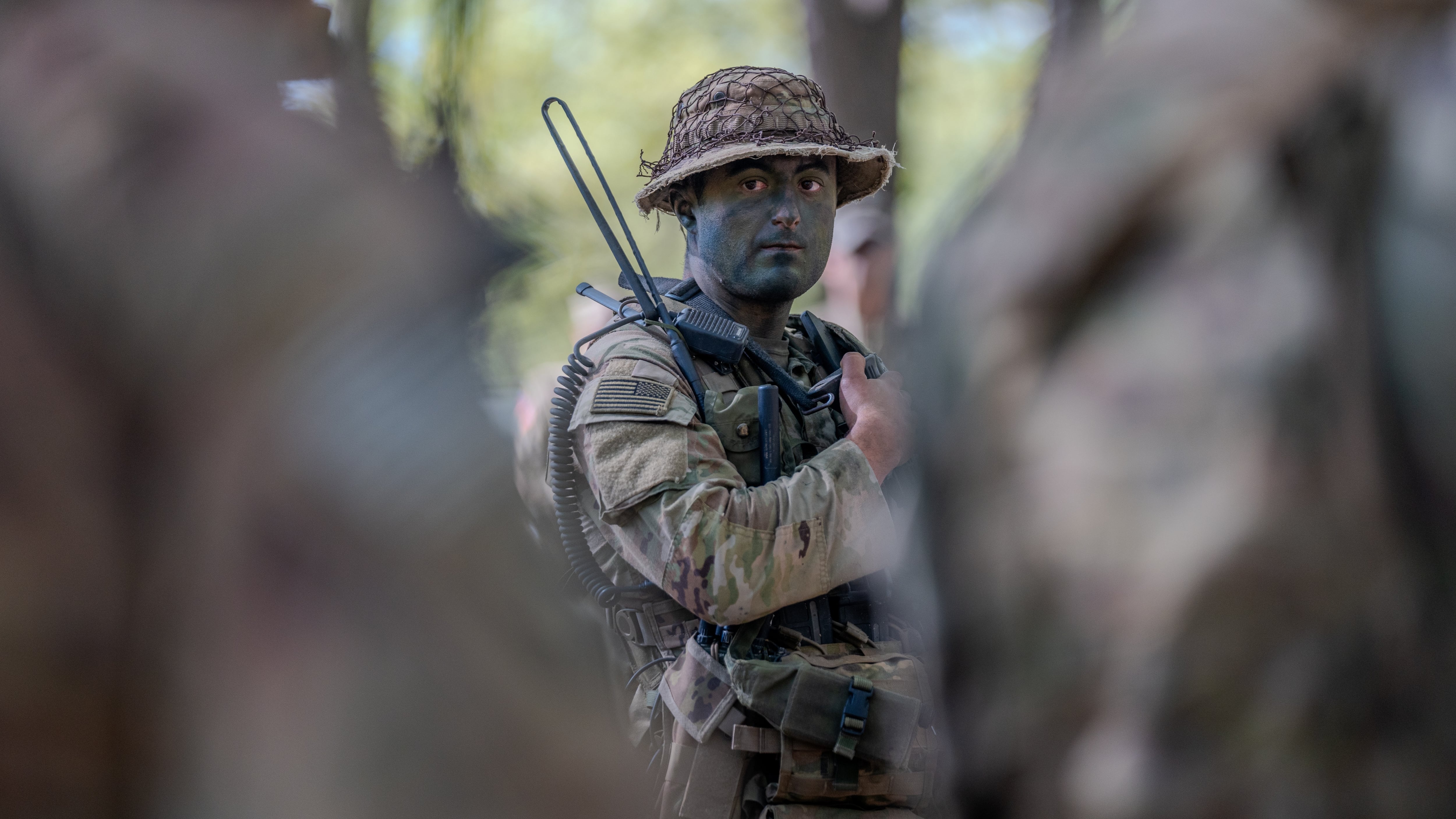The Army is employing diverse methods to keep its network up, data flowing and signals passing between units in a major field exercise as it continues to build the next generation of command and control.
Deployed brigades will need to establish their networks quickly, work seamlessly with partner or ally networks and toggle between multiple options — from 5G to low-earth-orbit satellites — to maintain connectivity, officials said.
Some of that is already being done with the rotation of 2nd Brigade, 101st Airborne Division, at the Joint Readiness Training Center, or JRTC, at Fort Johnson, Louisiana.
Maj. Gen. Patrick Ellis, director of the Army Futures Command Cross Functional Team-Network, and Mark Kitz, program executive officer for the Army’s command, control and communications-tactical at Aberdeen Proving Ground, laid out work on both the current and future tactical communications network Wednesday at the Armed Forces Communications and Electronics Association TechNet event in Augusta, Georgia.
RELATED

Ellis noted the four priorities for the Army’s network — survivability, interoperability, data-enabled and modular — are reflected in current training and experimentation.
The two-star observed this firsthand as deputy chief of staff for U.S. Army Europe and Africa. During his tenure, eight division staffs rotated through the theater to support operations in Ukraine, each bringing their own equipment and communications and configurations and quickly learning what worked.
As conditions changed, so did their approaches.
For example, early in the war, any use of a mobile phone would get the user killed. But now, mobile phones on the correct networks are the only way to “hide” in the electromagnetic spectrum, Ellis said. If a user keys up on any military network, the Russian military will strike nearly instantaneously.
A tool developed through network experimentation in Europe is now being used across the globe, Ellis said. Using radio data over an Internet protocol-style tool built by the 2nd Cavalry Regiment allowed users to speak English into the radio and have it translated to text in the target language on the other end.
Another change, Ellis noted, is that allies are investing in their own networks, defensive communications and protocols. So, instead of allies simply showing up with a device and jacking into the U.S. network, many now want to use their own networks, which requires further coordination.
“We’ve not been able to solve that yet,” Ellis said.
The Army’s C2 Fix program focuses on the current state of Army command and control systems. The Next Generation C2 may modify aspects of future communications architecture, Ellis and Kitz said.
Kitz said the Army expects the industry to have the opportunity to compete for the Next Generation C2 program by early 2026.
The 2nd Brigade rotation involved an air assault from Fort Campbell, Kentucky, to Fort Johnson, Louisiana, across nearly 500 miles, Kitz said. The unit maintained constant connectivity by using a combination of 5G commercial technology, satellite communication and tactical radios.
Beyond maintaining continuity, commanders are now able to leverage the vast troves of data the C2 program is putting at their fingertips, Kitz said.
This capability allows commanders to pull in live data from their own units along with adversary location, terrain, environment, weather history and doctrinal approach to query data.
“If I commit the reserve, what does this do to me three days from now?” Kitz said as an example. “If I move my fire support coordination line back, what does that do to my consumption rates?”
By running operational models quickly, a commander can more effectively evaluate an approach to mission sets or tactical problems, Kitz said.
“This allows the commander to look at this in real time,” Kitz said.
A basic awareness of the communications landscape is influencing commanders’ decisions, he said. For example, the brigade commander at JRTC brought a “whole bunch of (radio frequency) decoys” to conceal his command post.
Todd South has written about crime, courts, government and the military for multiple publications since 2004 and was named a 2014 Pulitzer finalist for a co-written project on witness intimidation. Todd is a Marine veteran of the Iraq War.








